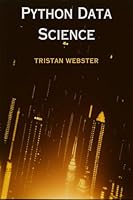
Learning SAS by Example: A Programmer’s Guide, 2nd Edition
- Length: 536 pages
- Edition: 2
- Language: English
- Publisher: SAS Institute
- Publication Date: 2018-07-15
- ISBN-10: 1635266599
- ISBN-13: 9781635266597
- Sales Rank: #253684 (See Top 100 Books)
Learn to program SAS by example!
Learning SAS by Example: A Programmer’s Guide, Second Edition, teaches SAS programming from very basic concepts to more advanced topics. Because most programmers prefer examples rather than reference-type syntax, this book uses short examples to explain each topic. The second edition has brought this classic book on SAS programming up to the latest SAS version, with new chapters that cover topics such as PROC SGPLOT and Perl regular expressions. This book belongs on the shelf (or e-book reader) of anyone who programs in SAS, from those with little programming experience who want to learn SAS to intermediate and even advanced SAS programmers who want to learn new techniques or identify new ways to accomplish existing tasks.
In an instructive and conversational tone, author Ron Cody clearly explains each programming technique and then illustrates it with one or more real-life examples, followed by a detailed description of how the program works. The text is divided into four major sections: Getting Started, DATA Step Processing, Presenting and Summarizing Your Data, and Advanced Topics. Subjects addressed include
- Reading data from external sources
- Learning details of DATA step programming
- Subsetting and combining SAS data sets
- Understanding SAS functions and working with arrays
- Creating reports with PROC REPORT and PROC TABULATE
- Getting started with the SAS macro language
- Leveraging PROC SQL
- Generating high-quality graphics
- Using advanced features of user-defined formats and informats
- Restructuring SAS data sets
- Working with multiple observations per subject
- Getting started with Perl regular expressions
You can test your knowledge and hone your skills by solving the problems at the end of each chapter.
Table of Contents
Part 1: Getting Started
Chapter 1: What Is SAS?
Chapter 2: Writing Your First SAS Program
Part 2: DATA Step Processing
Chapter 3: Reading Raw Data from External Files
Chapter 4: Creating Permanent SAS Data Sets
Chapter 5: Creating Labels and Formats
Chapter 6: Reading and Writing Data from an Excel Spreadsheet
Chapter 7: Performing Conditional Processing
Chapter 8: Performing Iterative Processing: Looping
Chapter 9: Working with Dates
Chapter 10: Subsetting and Combining SAS Data Sets
Chapter 11: Working with Numeric Functions
Chapter 12: Working with Character Functions
Chapter 13: Working with Arrays
Part 3: Presenting and Summarizing Your Data
Chapter 14: Displaying Your Data
Chapter 15: Creating Customized Reports
Chapter 16: Summarizing Your Data
Chapter 17: Counting Frequencies
Chapter 18: Creating Tabular Reports
Chapter 19: Introducing the Output Delivery System
Chapter 20: Creating Charts and Graphs
Part 4: Advanced Topics
Chapter 21: Using Advanced INPUT Techniques
Chapter 22: Using Advanced Features of User- Defined Formats and Informats
Chapter 23: Restructuring SAS Data Sets
Chapter 24: Working with Multiple Observations per Subject
Chapter 25: Introducing the SAS Macro Language
Chapter 26: Introducing the Structured Query Language
Chapter 27: Introducing Perl Regular Expressions







